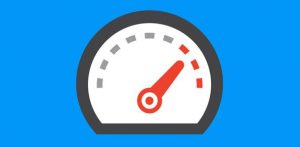As mentioned in a previous article about website performance, how fast a website loads is a critical 
However, how do we do this? There are many many different ways to improve a website’s load time, with some requiring some very sophisticated knowledge on coding and the ‘behind the scenes’ understanding of websites, whilst others can be done by anyone without prior competency. Looking at the latter, here are 5 ways you can effectively improve a website’s performance quickly and, hopefully, easy.
Cache the Site
Caching is an effective way to improve website load time, by temporary storing static code and files that are smaller in size, and do not need to be re-computated.
Caching can make a huge difference to load time, as well as the load of your server’s CPU. For this reason, it goes without saying every website should have some sort of caching enabled.
Use a Content Delivery Network (CDN)
A CDN stores static files of your website on servers around the globe, reducing the time it takes between the web user’s IP address and the server being used as a content delivery network.
For example, if your website’s server is in the US, and someone from Australia visits your website, the request for data and data being sent has to travel the whole way around the world. That’s 15,000 km the request has to travel, and then 15,000 km for the data to travel back – this will make a difference to load time.
Using CDNs reduce the time to and from for the data being sent, reducing the equivalent load time.
Stick as much code in the Footer
With website load time, what we care about is time to interactive. It is the time it takes for your website to perceivably load and become interactive to the web user.
In order to reduce this time, prevent any javascript or CSS from loading that is not contributing to the core website loading, so that that the website time to interactive can reduce. This does not decrease the total load time in anyway: just modifies what code is loaded when and in what order.
Lazy Load as much as Possible
Lazy loading is a way to reduce the website load speed, by only loading files and data once the web user scrolls down to the point of needing it (such as images, videos etc.) being loaded. This is an effective way to significantly reduce load time, especially on sites that are image heavy and have long content.
Minify and Combine Javascript and CSS
All code that is created generally will have spaces and comments in it. As well as this, they will be separate files. Minifying code removes all the extra comments and spaces to reduce the total size of the file, whilst combining code combines all the code into one file, so that only one request is sent to and from the server instead of multiple requests, which can take longer to load.



